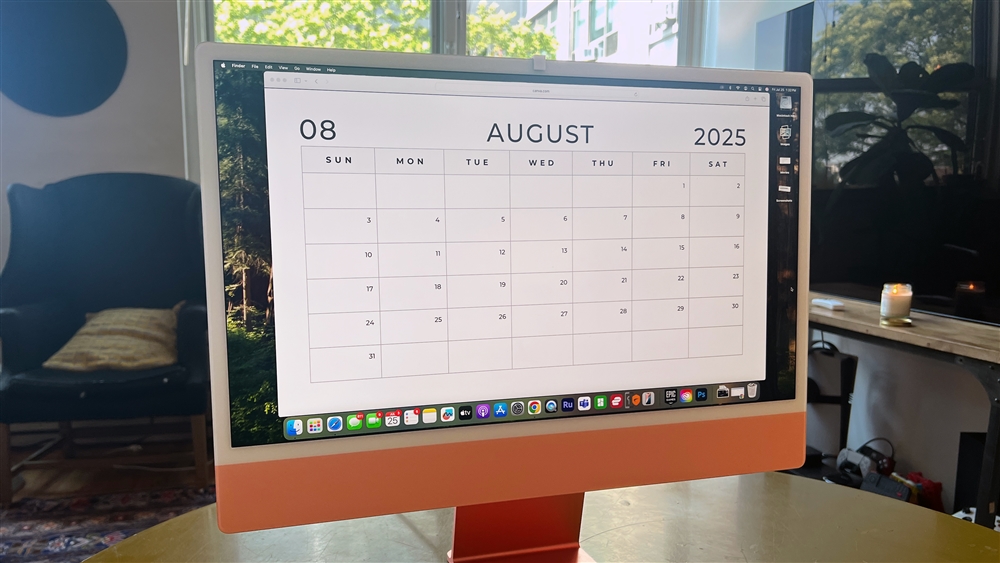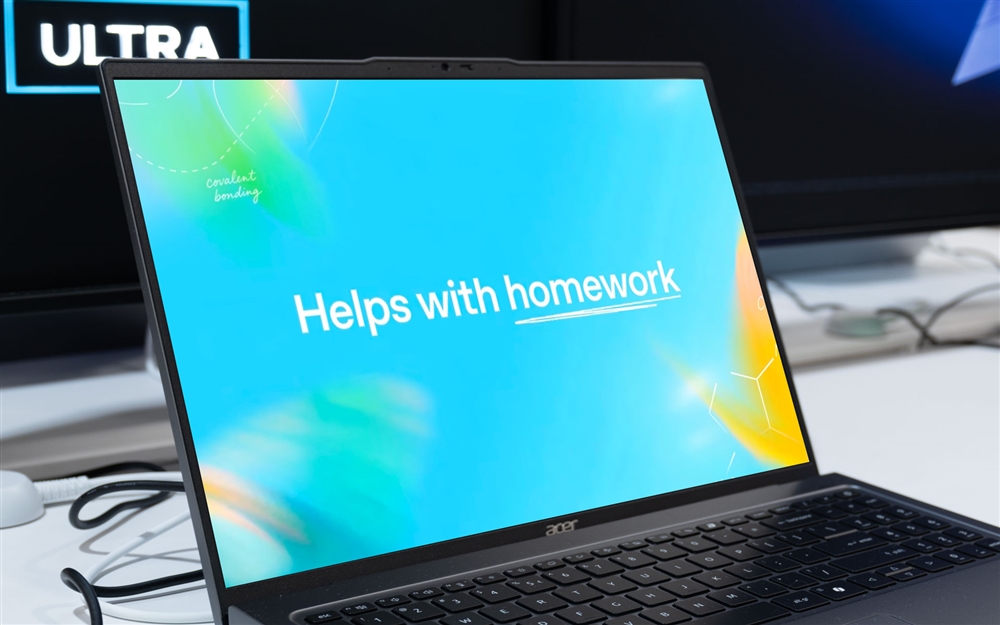This Week in AI: ChatGPT Goes to School
For Aug 1, 2025: The Wizard of Oz gets an AI upgrade, more vibe coding tools from Microsoft and Google, Proton promises privacy-first AI, news publishers are hurting.News

There's a lot of talk about how artificial intelligence is affecting education, from the good of helping tutor students to the bad of teachers getting caught using it to grade papers. Now, OpenAI is leaning into ChatGPT's schoolwork with a new "study mode," launched just before back-to-school season.
Study mode has several functions, including step-by-step tutoring to teach and reinforce ideas and providing quizzes ahead of a test. OpenAI said the new mode leans into interactive prompting and "knowledge checks" with open-ended questions. "The research landscape is still taking shape on the best ways to apply AI in education," the company said when announcing the feature. "As we run longer-term studies on how students learn best with AI, we intend to publish a deeper analysis of what we’ve learned about the links between model design and cognition, shape future product experiences based on these insights, and work side by side with the broader education ecosystem to ensure AI benefits learners worldwide."
Whether ChatGPT is a net positive for education is of course still up in the air. But it's turning out more like how Google and Wikipedia revolutionized card catalogs and research desks, significantly cutting down the amount of time people seeking information had to spend actually finding it.
The problem back then, as now, is when people don't take the extra step of actually following through, and instead use these tools as shortcuts to cheat themselves out of actual knowledge-seeking.
OpenAI, for its part, seems to at least appreciate the tension of that idea and appears to be hinting at possible solutions.
"This is a first step in a longer journey to improve learning in ChatGPT," the company said, adding that it's working with Stanford University's Accelerator for Learning as part of this project.
The Wizard of Oz meets AI
Back when it first came out in 1939, The Wizard of Oz was considered a masterpiece of visual effects. The scene in which the movie switches from sepia to color seemed magical on its own. Other things like the other-worldly realism of Dorothy's companions, the flying monkeys, and the incredible depiction of the tornado were among us the most advanced visuals moviegoers had ever seen at that time.
In today’s world of computer-generated imagery, it can be hard to remember how revolutionary The Wizard of Oz was. It turns out that some modern filmmakers have a new effect surprise up their sleeves: AI upgrades.
The massive Sphere video experience in Las Vegas has announced that it is going to be playing a special version of The Wizard of Oz to audiences, with huge new enveloping vistas while the story plays out. Of course, when the movie was originally shot, the closest thing anyone had to a video sphere was the imagined crystal ball. So filmmakers used AI to upscale the sharpness of the video, and then used generative AI to create extra scenery that makes the movie suitable for the giant curved screen that audiences will be watching on.
My wife literally wore out the VHS of her edition of The Wizard of Oz when she was a child. However, when I told her about the version of the sphere, she just kinda shrugged. I guess that’s one Wizard of Oz super fan who will be sticking to the more standard rendition for now.
Microsoft becomes second $4 trillion company
There’s a new $4 trillion company: Microsoft.
Back a decade ago, the software maker was considered a sort-of relic of the tech world. Its Windows and Office software were the center of many people's digital lives, but it seemed stuck in a rut after the mixed reception of its Windows 8 upgrade, and lackluster sales of its original Surface tablets. Now, thanks to AI, Microsoft is considered a titan of industry again.
Its business partnerships and investments in the space, most notably with OpenAI through an investment partnership, has helped revitalize the way people see the once sleepy seeming company.
While Microsoft fortunes have turned, its frenemy Apple continues to also be a tech leader, though not so much in AI. For Apple, its nearly-two-decade-old iPhone is still its most important product. Though Apple has used the iPhone to expand into areas like gaming and even movie making, the company is struggling to make waves in AI.
Whether or not it really needs to is an open question, considering Microsoft is doing plenty well without selling phones, and Apple seems OK without a leading AI product yet. But one thing the tech industry has taught us is that fortunes can turn rapidly, and as people debate whether or not the AI boom is sustainable, right now, investors are clearly betting on both sides.
More vibe coding tools
Vibe coding has become the talk of the tech industry lately and there’s good reason why: Not only do tech companies love to talk about themselves, but the promise behind vibe coding is really compelling. The idea of being able to ask an AI to effectively create any app you want is the logical next step. Before Apple and Google and Microsoft's app stores, people rarely bought any new apps after buying their computer. Now downloading an app is as easy as clicking (tapping?) a button.
Google and Microsoft are taking that all a step further with Opal and GitHub Spark, technologies they say allow you to describe the app you want and get a working prototype back, seemingly by magic. Of course, it’s much more complex than that. And, as any engineer will tell you, the code that comes from AI is not guaranteed safe nor bug and error free. But the promise of a future where apps are made for us individually sounds promising.
For software engineers who might be sweating a little bit while looking at these new tools, the consensus is that their jobs are still going to be very important. Unlike data entry and other rote knowledge jobs that AI is already starting to automate, the thing software engineers and app developers have taught us is that there’s always a new idea that can change the way we use technology. And it’s the idea phase where the true value is.
Proton promises more secure AI
When AI use really began to spread, companies began warning employees not to share sensitive information with a chatbot, for fear it might not be secure. That warning was followed up with new concerns that even if chatbots might help some people work through loneliness and anxiety, they don't keep your confidentiality like one would.
Proton says it might have an answer. The private email and VPN provider announced a privacy-focused AI assistant called Lumo, which TechCrunch said "keeps no logs of your conversations, has end-to-end encryption for storing chats and offers a ghost mode for conversations that disappear as soon as you close the window."
Even better, Lumo doesn't require you to have an account, though if you do, it can interact with your Proton Drive files.
"Lumo is based upon open-source language models and operates from Proton’s European datacenters. This gives you much greater transparency into the way Lumo works than any other major AI assistant," Proton wrote when announcing Lumo. That's different even from companies like Apple, whose privacy promises may be hard to keep with its connections to OpenAI or Chinese AI companies. With Lumo, Proton promised, "Your queries are never sent to any third parties."
Google AI hitting publishers hard
We’ve been hearing for more than a year now that Google's AI efforts are hurting publishers, and the latest data reported by the Guardian only underscores that. The paper reported that a recent study by analytics company Authoritas found sites previously ranked first can lose 79% of traffic if their results appear below Google's AI Overviews.
So what's going on?
Of course, Google doesn’t appear to be trying to hurt publishers so much as save its own skin. Search is still Google's most important business by far, representing a vast majority of its revenue and profit. You would think the company would be very careful not to upset the stability of a product like that, but instead just the opposite is happening. Google started adding AI summary features and a new AI mode rapidly as user behavior clearly began to shift. That doesn’t absolve Google of responsibility for its part in the media collapse that’s happening now. But it does give some context to how quickly everything is changing and how even some of the tech industries‘s biggest players are rushing to respond.
In the meantime, publishers are among the biggest casualties of all of this, leading to a fascinating debate about the future: If artists lose the business model that makes their work sustainable, what happens to art?
I’ve always chuckled about how science fiction often relies on referencing contemporary music and art. No matter how far set in the future, they always seem to reference artists around the end of the 20th century or the beginning of the 21st. Of course, it’s hard enough inventing what the future might look like, let alone imagining what kind of art will be created.More from MC News
- The NVIDIA 50 Series Laptop Buying Guide
- Best 3D Printer Projects for Nintendo Switch 2
- How to Upgrade Your Laptop's RAM and Storage
- How to Build Your Own AI Personal Assistant
- The End is Coming for Windows 10: What You (Still) Need to Know
- Keyboard 101: Intro to Computer Keyboards
- Fix It Yourself: Talking to iFixit on Why Repairable Tech Matters
Ian Sherr is a widely published journalist who's covered nearly every major tech company from Apple to Netflix, Facebook, Google, Microsoft, and more for CBS News, The Wall Street Journal, Reuters, and CNET. Aside from writing, he tinkers with tech at home, is a longtime fencer -- the kind with swords -- and began woodworking during the pandemic.











